Inside the First Solar-Powered Flight Around the World
A new documentary highlights the challenges overcome by the experimental aircraft, Solar Impulse
/https://tf-cmsv2-smithsonianmag-media.s3.amazonaws.com/filer/ef/fb/effbd06d-a7f0-4bb8-bda9-985711990c00/abudhabi_landing.jpg)
In the wee hours of July 26, 2016, Solar Impulse 2 landed in Abu Dhabi to eager crowds and cameras. After 14 months of travel and 550 hours in the air, the plane had accomplished what many had deemed impossible: traveling 25,000 miles around the world—over four continents, two oceans and three seas—without a drop of liquid fuel. The sun's vibrant rays supplied the craft's only power.
Now, a new NOVA documentary, The Impossible Flight, airing tonight on PBS, dives into both the challenges and the triumphs of completing this harrowing trip around the world, giving audiences a taste of the passion that drove the Solar Impulse team, and their soaring optimism about the future of energy.
Solar Impulse is the brainchild of Bertrand Piccard, a psychiatrist and explorer who came up with the idea after his 1999 nonstop spin around the world in a hot air balloon. During that venture, he watched his fuel level drop day after day, worrying if he'd have enough, which left him wondering if there was a better way. Eventually, he figured it out: lose the fuel.
Piccard reached out to potential partners in the aviation industry, but was met with resistance. "Everyone said it was impossible,” he says. “[They] said I was just dreaming." In order to have enough solar panels to power its propellers, the plane would have to be massive—but at the same time, extremely light.
So Piccard turned to the Swiss Federal Institute of Technology where he connected with André Borschberg, an engineer and entrepreneur who trained as a pilot in the Swiss Air Force. Borschberg was consulting for the institute (which he describes as "The MIT of Switzerland") and was intrigued by Piccard's idea. The pair officially announced the project in 2003.
"When you announce officially," says Borschberg, "there is no way back afterwards. And [so] that's what we did for the next 13 years." The duo reached out to investors, engineers, industry partners and more to develop the plane. Every component was tested and optimized, right down to the glue binding the carbon fiber structure.
The result of all of this work, Solar Impulse 2, is certainly a feat of engineering. The plane boasts a wingspan larger than a B-747 jumbo jet, but only weighs around 5,000 pounds, which is comparable to an average family car. A staggering 17,248 photovoltaic solar cells—each one roughly the thickness of a human hair—blankets the delicate wings and fuselage. These cells bask in the sunlight, charging the plane's four lithium batteries to keep its propellers spinning through the dark nighttime hours.
Piccard and Borschberg traded off flying the plane for the 17 legs of the venture. Each slept only in short intervals to tend to the plane's demands. Its wings couldn't tip more than five degrees, otherwise the craft might spin out of control thanks to its low weight and expansive size. This airy construction also meant that even a small spot of foul weather or winds would easily whip the plane off course.
As the documentary details, weather became the team's biggest foe. Because the plane travels on a sinuous path—climbing to nearly 30,000 feet elevation during the day but slowly descending to roughly 5,000 feet at night to save energy—the team has to forecast wind, humidity and temperature at multiple elevations. And the swirling weather system is constantly evolving and changing. Weather conditions delayed their departure from China, later forcing the team to abort their initial Pacific crossing and land in Japan. But then more foul weather began to churn over the Pacific, causing two canceled departures.
Tensions rose as the schedule was continually pushed back—but the crew was also well aware of the consequences of pushing through weather or technical difficulties. "If there is a failure, there is a person in there," one of the team's crew says in the documentary.
Though there were many bumps along the way, the strong convictions of the Solar Impulse team helped them navigate these challenges. "I never lost faith in what we were doing," says Borschberg. "There was something which told me always that there is a solution somewhere. It took more time, it took more effort, definitely...but ultimately we always find a way."
But a plane can't fly on convictions alone. Creativity, and thinking outside of the aviation industry, was also vital to their success, says Piccard. Many aviation experts seemed to have become limited in their thinking, blinded from past experiences of how to build a flying machine. Instead, the duo turned to shipyards, chemical companies and more to seek out potential materials and solutions for their aircraft. The ultra thin carbon fiber that makes up the body of the plane, for instance, was created by the same company producing hulls for the sleek sailing boats the European Alinghi team race in the America's Cup.
"We couldn't develop new solar cells, new batteries, new motors," says Borschberg, noting there just wasn't time to rethink every technology they used. Instead they found the cutting-edge solutions already out there, repurposing them for flight, he says.
“I certainly think it’s a pretty impressive technical achievement,” Craig Steeves, associate director of the University of Toronto Institute for Aerospace Studies, told National Geographic's Christina Nunez upon completion of Solar Impulse's voyage. “They’re pretty far ahead on a path that the aerospace industry would like to go.”
Still, Piccard and Borschberg are quick to add that solar-powered options will not be heading to commercial airlines anytime soon. Solar Impulse 2—and its predecessor, Solar Impulse 1—could only hold one person (the pilot) in its unheated and unpressurized refrigerator-sized cockpit; its single seat doubles as a toilet. The plane is also surprisingly slow, traveling at an average of 30 miles per hour to maximize energy savings.
"It was never an end in itself," Piccard says of the plane. "Solar Impulse was the symbolic way to demonstrate that you can use this technology for big adventure that everybody thought was impossible." In other words, the goal of the flight was not necessarily to push the field of aviation, but to push the imagination.
But by butting up against these limits, the Solar Impulse team did make important contributions to aviation. Many aviation companies—including AirBus, Boeing and Siemens—have recently announced development projects for electric or hybrid systems to reduce emissions of future flights. While some of these efforts began before Solar Impulse took to the skies, the trip drew attention and inspiration to the burgeoning field. "It was very funny to see that the engineers working in the industry were laughing when I initiated the project," Piccard says. "But now the same engineers are working on electric airplane programs."
While solar power remains impractical for these ventures, Piccard explains, the batteries could be charged on the grid before departure. But those technologies still likely require decades of testing and development to reach to commercial scale, according to Peter Wilson, an electronics and systems engineering professor at the University of Bath. One of the primary limitations of these flights is battery storage, he wrote for The Conversation in 2015.
Some of the biggest impacts of Solar Impulse may actually be found on the ground. The flight has pushed cross-discipline advancements in many industries, according to Piccard and Borschberg. The materials development company Covestro, a Solar Impulse partner, is adapting the ultra-low weight, high-performance cockpit insulation for more efficient refrigerators. According to Piccard, a startup company in India is also planning to use the high-efficiency engines of the plane in ceiling fans that consume 75 percent less electricity.
But now that it’s said and done, Piccard is ready for his next steps. "Now, of course, we have to continue,” he says. “Success is not there to sit in the armchair and enjoy it. Success is there to make the next step.”
In November 2017, Piccard and his crew launched the World Alliance for Efficient Solutions, tasked with connecting investors and governments with 1,000 innovative solutions that are profitable and environmentally friendly.
"Very often the protection of the environment on one side and industry on the other side do not manage to find a common language," says Piccard. He hopes that the 1,000 solutions project provides the platform for those conversations to happen.
And though this phase is less dramatic, Piccard hopes that the documentary will help cement the beauty and drama of Solar Impulse in the hearts of its audience and inspire them to keep their minds open as technology advances.
Both pilots’ optimism about the future of energy is certainly infectious, and their passion for Solar Impulse is palpable. As Borschberg closes the conversation, he describes his experience soaring above the clouds. "It's absolutely beautiful to be up there, it's a gift,” he says. "You look at the wings, you look at the sun above you and you start to understand that just the sun rays falling on the wings are sufficient to make you fly.”
"It's really impressive," he adds. "It gives you faith in this type of technology."
The two-hour premiere of The Impossible Flight airs January 31, 2018 at 9 P.M. ET on PBS.
/https://tf-cmsv2-smithsonianmag-media.s3.amazonaws.com/accounts/headshot/Wei-Haas_Maya_Headshot-v2.png)
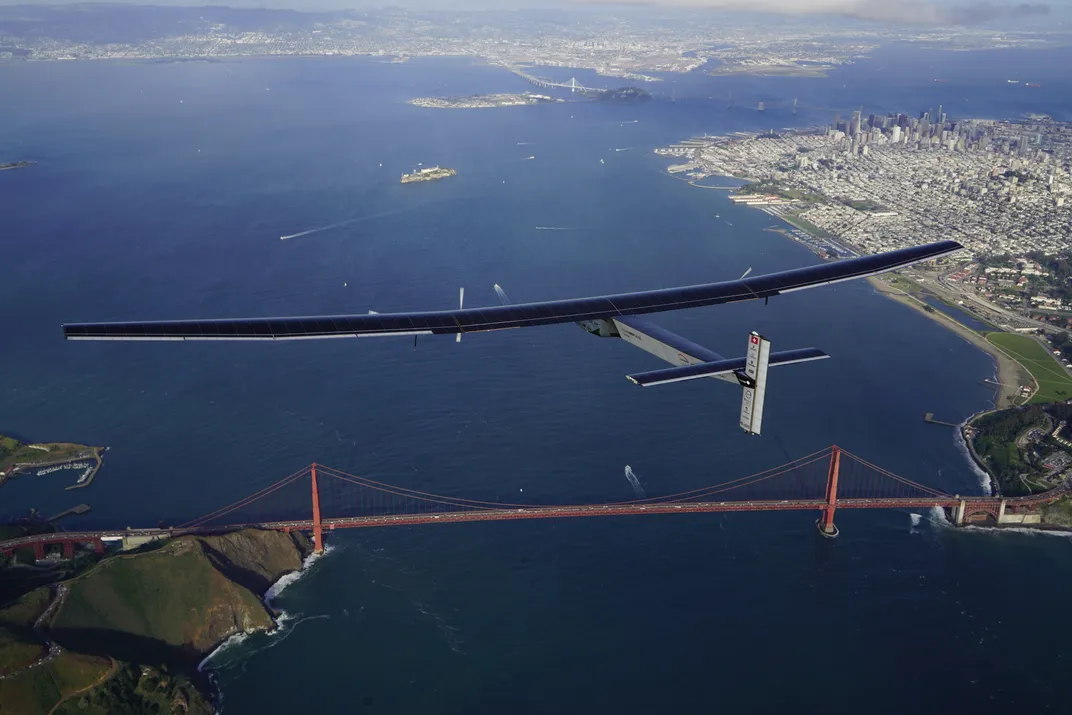

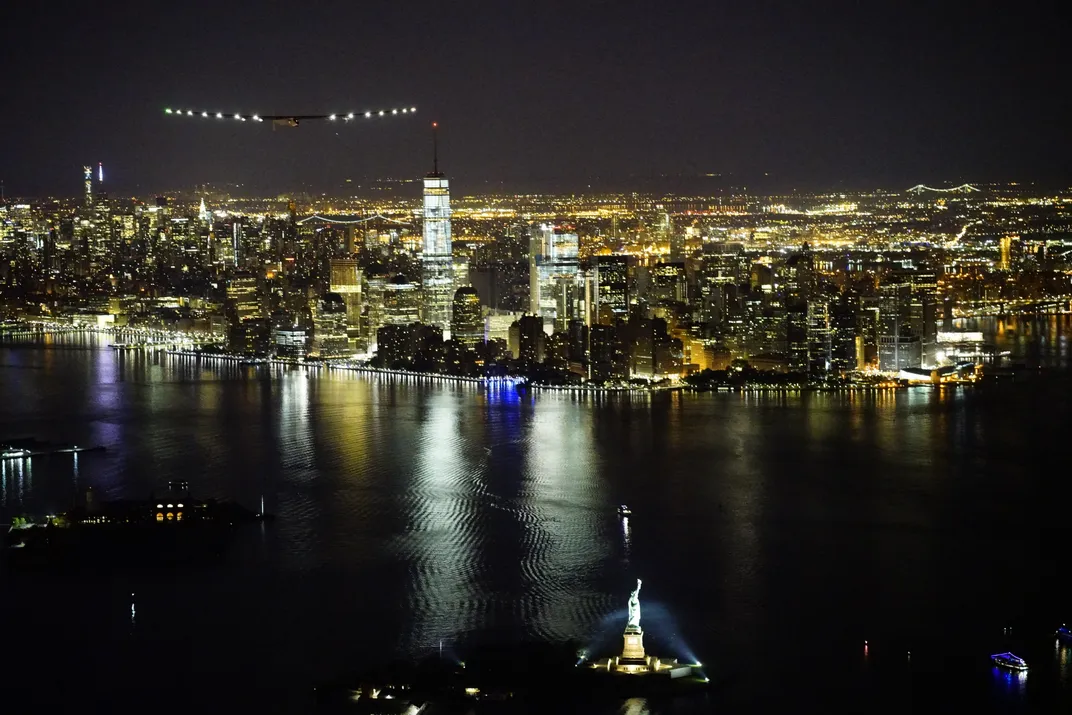
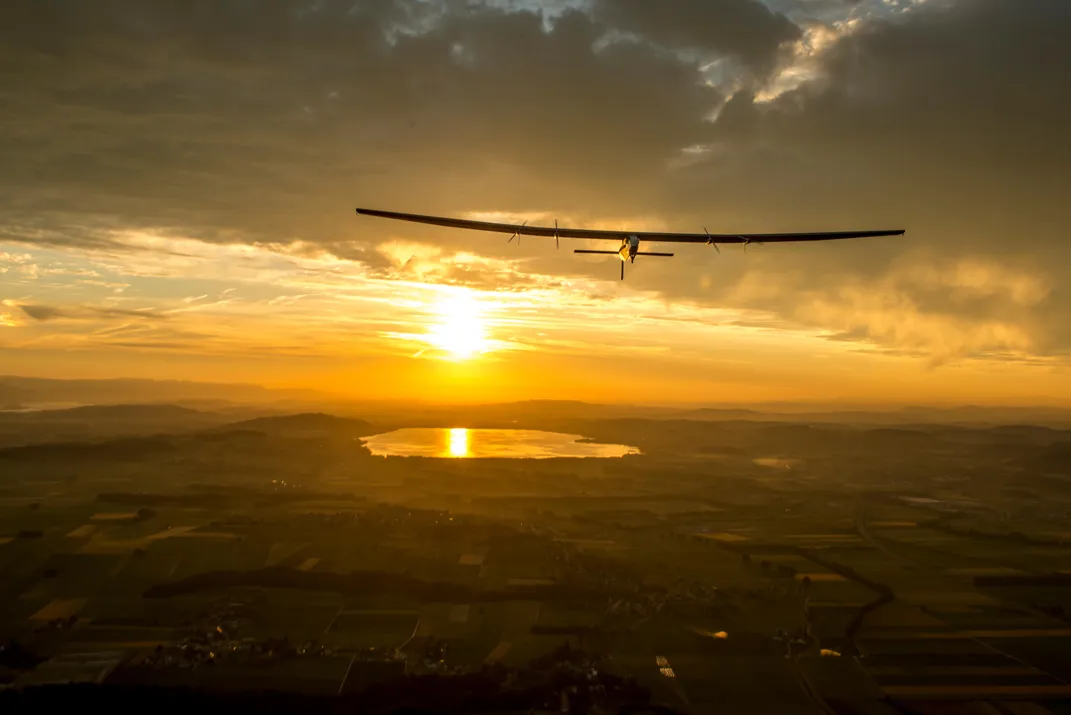
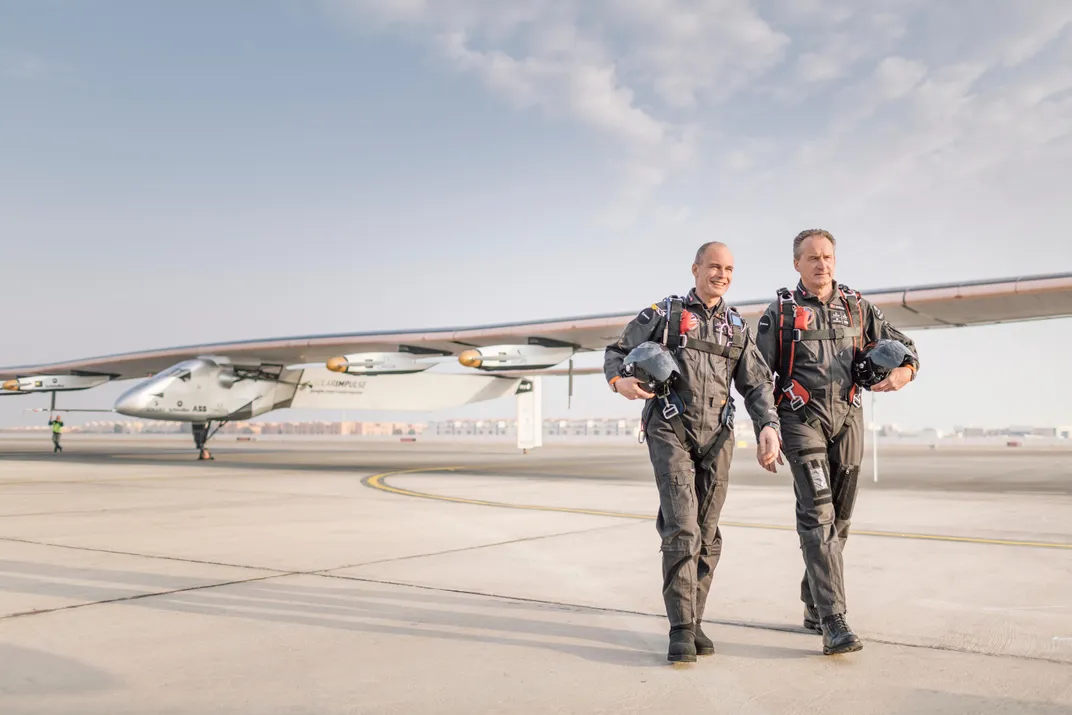
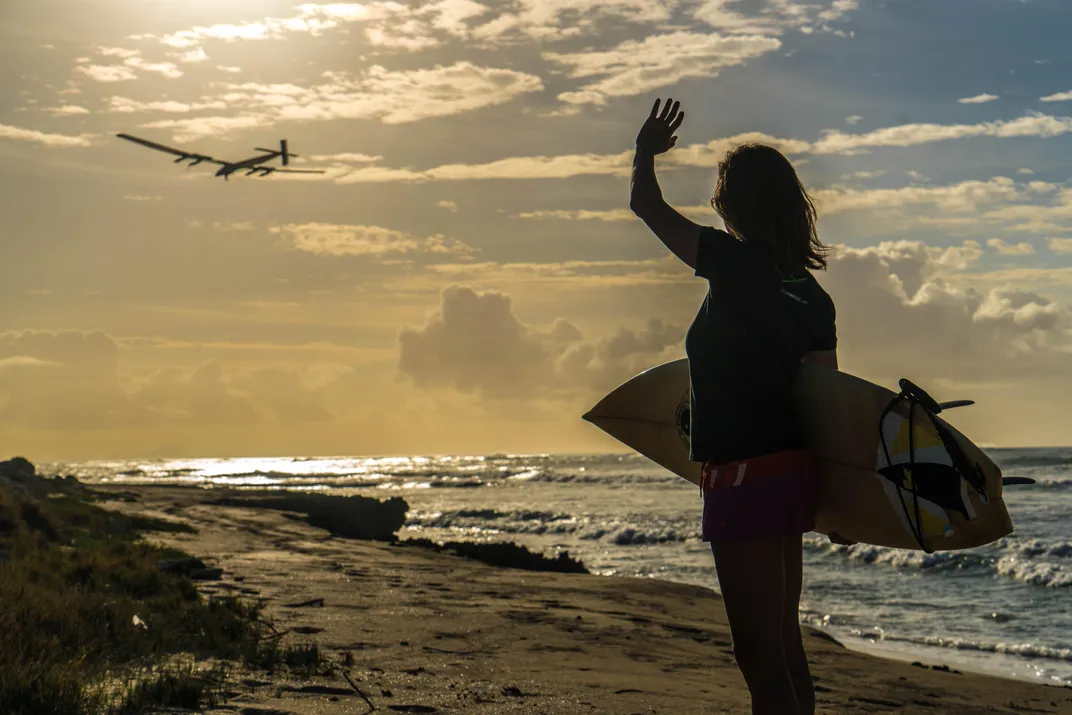


/https://tf-cmsv2-smithsonianmag-media.s3.amazonaws.com/accounts/headshot/Wei-Haas_Maya_Headshot-v2.png)